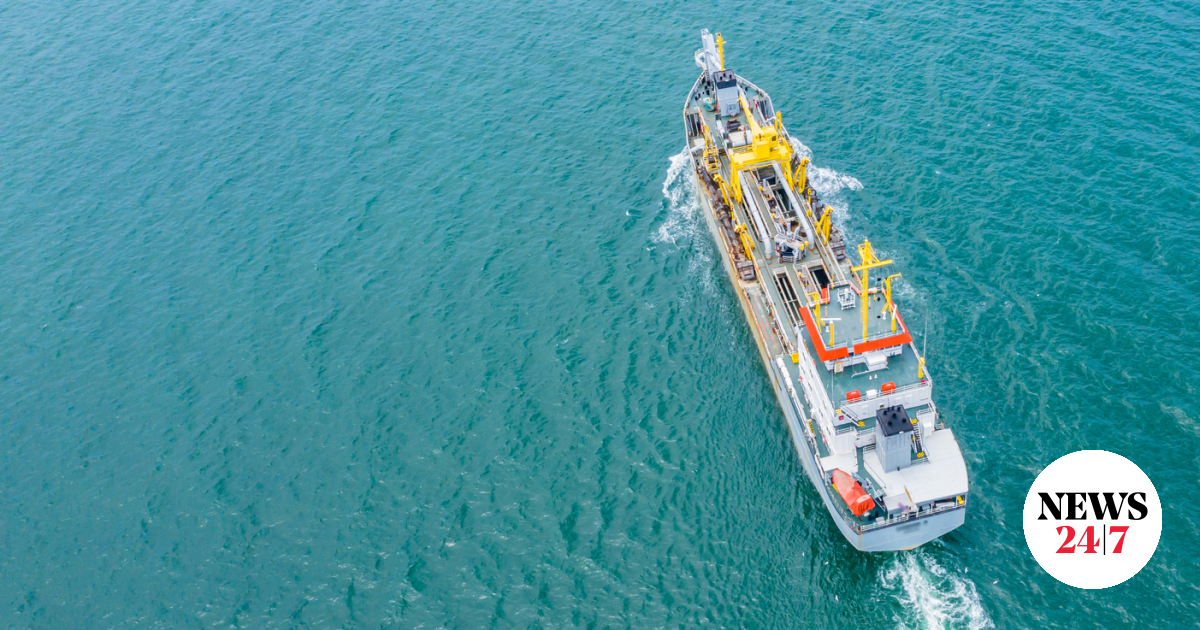Fear and speculation mount after another tanker is hit by unexplained blast
INSIDE the flooded engine room of Vilamoura (IMO: 9529293), crew members have documented several shrapnel holes left in the deck after an explosion ripped through the tanker on Friday.
The blast left the suezmax, operated by George Economou’s TMS Tankers taking on water and unable to manoeuvre 90 nautical miles off the Libyan coast. It was carrying 1m barrels of crude oil it had just loaded from Zueitina Terminal, Libya just a few hours prior to the blast.
While the ship was successfully stabilised and is being towed to Greece with no injuries and no pollution to report, the badly damaged tanker will now become the subject of a forensic, and likely international, security investigation.
Marshall Islands-flagged Vilamoura is now the fifth tanker to suffer an explosion this year and while industry and government security agencies have suspicions and theories, the culprits behind these blasts remain unclear.
Unnamed “state actors” remains the consensus best guess from security analysts and industry representative bodies. The working assumption tends to favour the theory the targeted explosions, often delivered via limpet mines, are related to vessel’s recent history of loading at Russian oil export facilities.
But there is no hard evidence to back up those theories, leaving shipowners and operators increasingly concerned that the lack of clear motive or a confirmed source of the attacks is making individual vessel risk assessments difficult.
Vilamoura called at the Russian port of Ust-Luga in early April, where it loaded Kazakh-origin barrels. It also called at the Caspian Pipeline Consortium terminal near Novorossiysk in May, which also loads mostly Kazakh barrels.
That pattern correlates with at least four other tanker explosions since January, three of which happened in the Mediterranean.
The Malta-flagged Seajewel (IMO: 9388807), the Marshall Islands-flagged Seacharm (IMO: 9773765), the Liberia-flagged Grace Ferrum (IMO: 9667928), and the Antigua and Barbuda-flagged Koala (IMO: 9234642) had all called at Russian ports prior to being hit with an explosion.
These previous four tankers had also all recently stooped at Malta’s outer port limits prior to their explosions. In the case of Vilamoura, the tanker was tracked distancing from Malta’s OPL on June 20.
In the absence of any hard evidence or investigation outcomes, that common connection has been sufficient for several private security firm and industry bodies to privately discuss the “probability” that the explosions were linked to the Ukraine war.
In March, security firm Ambrey issued a threat assessment concluding that recent spate of attacks targeting ships that previously called at Russian oil export hubs was the work of unnamed “state actors”. While that report did not finger Ukraine, the conversations in private among private and government security analysts have all namechecked Ukrainian actors as being a likely and potential source of the explosions.
Lloyd’s List even understands that political back channels were used by the US to quietly warn the Ukrainian administration earlier this year that if it were somehow complicit in these explosions then it should cease with immediate effect.
The explosion on Vilamoura, however, suggests that whoever is behind the blasts has not heeded any warnings.
It also raises the possibility the recent explosions are less connected that initially assumed.
Much of the connected pattern of explosions had initially focused on the use of magnetic limpet mines being placed outside the hull, but an initial analysis of the photos from inside Vilamoura suggest that the explosion was inward.
That, and the fact the Vilamoura photos suggest that shrapnel penetrated three decks — the outer hull and two more — all point to the device not being a limpet mine.
There is also the Libya link to consider and a potential alternative theory behind at least two of the explosions.
In the case of the Liberia-flagged Grace Ferrum, which experienced two explosions under the bottom hull in the engine room area while waiting to discharge at Tripoli anchorage, Libya, on February 2, it was initially assumed that the link was with Russia. But the similarities to the Vilamoura case on Friday raise the possibility that the blasts were a spillover of Libyan related disruption and political disagreements over oil exports and offshore operations.
In the case of the of the Maltese-flagged tanker Seajewel, which was hit off Savona, the investigations focused on the origin of the crude oil it was transporting.
Preliminary findings by bomb experts and specialised divers indicated that Seajewel was luckier than other tankers in that first explosion dislodged the second device, limiting structural damage to the vessel.
Investigators ordered specific chemical analyses to determine whether the crude oil on board originated from Algeria, as declared by the vessel’s captain. The results of the analyses, conducted by a specialised laboratory confirmed that the oil on board Seajewel was of North African origin, ruling out the possibility of Russian crude. However, the possibility of covert trafficking of Russian or even Ukrainian oil has not been entirely excluded, as the chemical composition analysis can only determine the general geographical area of extraction, not the specific country. The investigation continues.
Meanwhile, in the absence of any conclusive analysis or firm evidence being presented by security agencies internationally, shipowners have been left second guessing what to base their risk assessments on.
Vilamoura was being towed to the south of Greece on Monday with an estimate time of arrival somewhere between July 1-2.
“The crew remain healthy and in good spirits,” said TMS in a statement.
Content Original Link:
" target="_blank">



































































